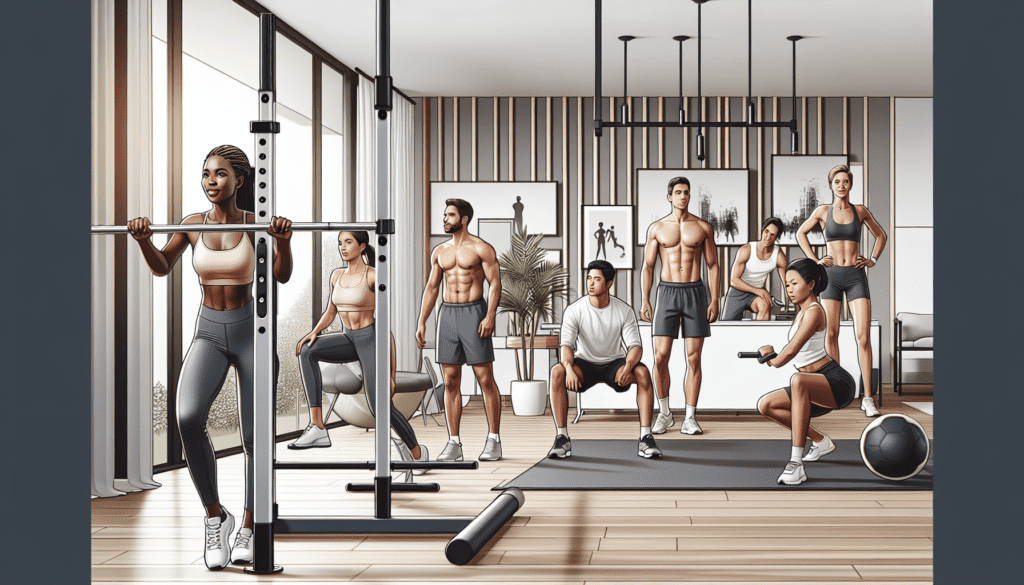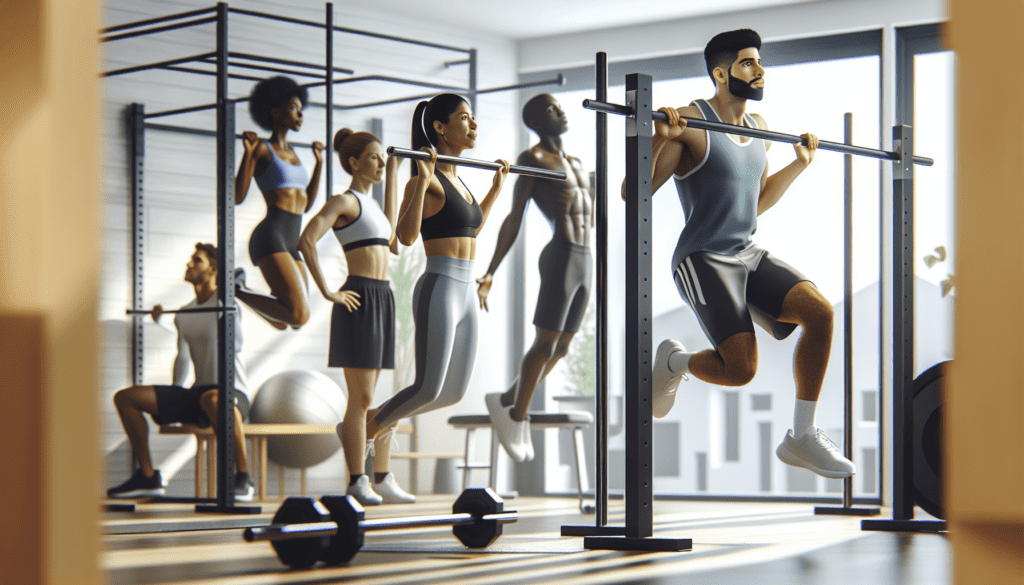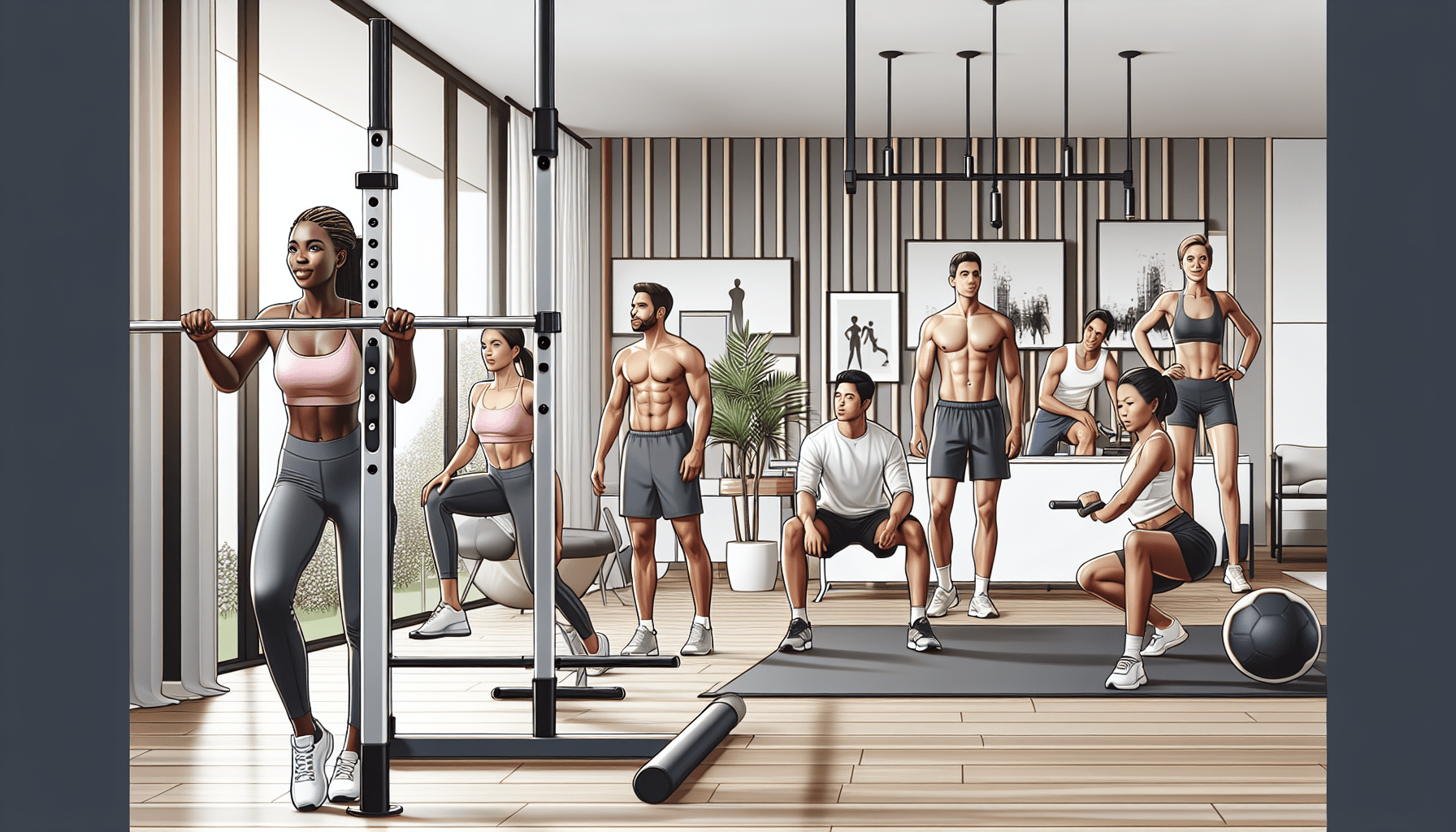Have you ever found yourself staring at a home fitness bar and wondering just how many exercises you can actually do with it? It’s easy to underestimate the versatility of such a simple piece of equipment. However, with a bit of creativity and some guidance, you can transform this humble tool into a cornerstone of your fitness regimen.
Why Choose a Home Fitness Bar?
The beauty of a home fitness bar lies in its simplicity and its ability to provide a full-body workout without taking up much space. Whether you live in a small apartment or are simply looking to streamline your home gym, a fitness bar can be a game-changer. Plus, it’s a cost-effective way to enhance your workouts without the need for expensive machinery or high gym fees.
Economic Benefits
One of the most compelling reasons to incorporate a fitness bar into your home workouts is the cost-efficiency it offers. Instead of investing in multiple pieces of equipment, you can perform numerous exercises with just one bar. This approach not only saves you money but also spares you the hassle of maintaining several pieces of exercise gear.
Space Efficiency
You’ll appreciate how little room a fitness bar occupies. Whether it’s tucked away under your bed or hanging behind your door, it’s the epitome of convenient storage. This makes it an excellent choice for those who prefer maintaining a clutter-free environment while still prioritizing their fitness.
Key Features of Fitness Bars
To fully utilize the home fitness bar, understanding its features and choosing the right one are crucial. Here are some key characteristics to look for:
Material and Durability
Home fitness bars are typically made from sturdy materials like steel or reinforced plastic, capable of withstanding significant weight and wear. Opt for a bar that boasts a high weight capacity and robust construction, ensuring safety and longevity.
Versatility and Adjustment
Look for a bar that offers adjustable lengths or features multiple grip positions. This versatility will allow you to perform a wider range of exercises and tailor your workouts to better meet your fitness goals.

Core Exercises Using Fitness Bars
Let’s start with some core-centric exercises. Strengthening your core is pivotal as it supports various bodily functions and other workout routines. Here are some effective core exercises you can do.
The Plank Hold
Exercise Setup: Place the fitness bar under your shoulders while you hold onto it, and extend your legs back into a plank position.
Execution: Maintain a straight line from your head to your heels, keeping your core tight. Hold this position for 30 seconds to one minute.
Oblique Twist
Exercise Setup: Sit on the ground with your legs extended, holding the fitness bar with both hands in front of you.
Execution: Lean back slightly, lift your feet off the ground, and use the fitness bar to rotate your torso from left to right. This motion should be controlled and deliberate, focusing on engaging the obliques.
Upper Body Exercises
Shifting focus to the upper body, the fitness bar can be just as effective. Here’s how you can sculpt your upper frame.
Pull-Up
Exercise Setup: Secure the fitness bar in a door frame at a suitable height. Grip the bar with your hands shoulder-width apart.
Execution: Pull yourself up until your chin is above the bar, then lower yourself back down with control. Ensure you engage your back muscles and biceps throughout the movement.
Tricep Dip
Exercise Setup: Place the fitness bar at waist height. Sit in front of the bar and place your hands behind you on the bar.
Execution: Lift your body, extend your legs in front of you, and lower your body by bending your elbows until they’re at a 90-degree angle. Push back up to start position, focusing on using your triceps.

Lower Body and Leg Exercises
Don’t forget about your lower body. The fitness bar can assist in strengthening and toning your legs and glutes.
Squat
Exercise Setup: Hold the fitness bar at shoulder height with both hands.
Execution: With feet shoulder-width apart, lower your body by bending your knees, keeping your back straight and chest up. Go down as if you are sitting in an invisible chair, then push back up to the starting position.
Glute Bridge
Exercise Setup: Lie on the floor with your feet flat and the fitness bar placed over your hips.
Execution: Lift your hips towards the ceiling, pushing with your heels and using the bar to add resistance. Hold at the top for a few seconds before lowering back down.
Crafting a Routine with Your Home Fitness Bar
Beginner Routine
If you’re just starting out, consider a simple routine that incorporates a variety of exercises to work different muscle groups. Begin with short sessions, gradually increasing the duration as your strength improves.
Advanced Routine
For those more experienced, challenge yourself with complex movements and perhaps integrate high-intensity interval training (HIIT) into your routine using the fitness bar for added resistance.
Final Thoughts
Whether you’re a fitness enthusiast or a beginner, the home fitness bar is an incredibly versatile tool that can help you achieve your fitness goals right from the comfort of your own home. By understanding its various uses and incorporating different exercises into your routine, you can enjoy a comprehensive workout that targets multiple muscle groups using just this single piece of equipment.
Now that you’re equipped with the knowledge and exercises necessary to utilize your home fitness bar effectively, it’s time to get moving! Create a consistent routine, stay dedicated, and watch as you progress towards your fitness goals. Remember, the key to any successful fitness journey is consistency and effort—so grab that bar and get started today.

